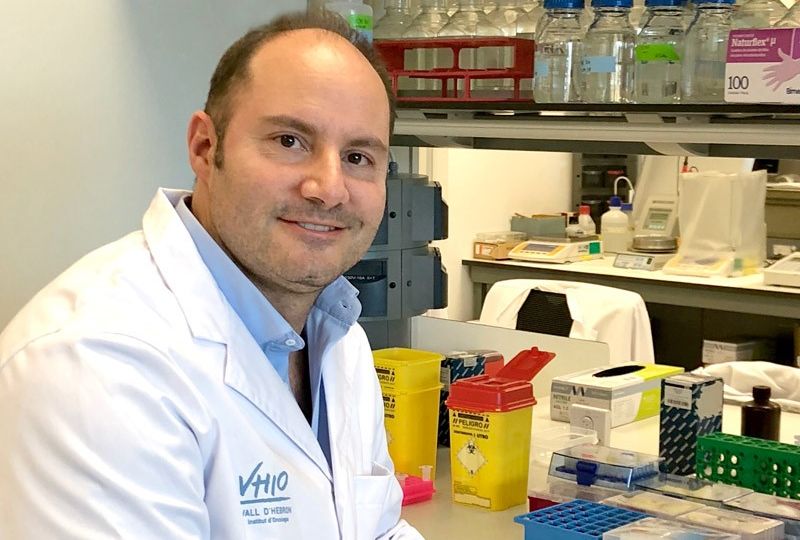
Paragangliomas (PPGLs) are rare neuroendocrine tumors that originate in the paraganglia. These tumors can affect individuals of any age but are most frequently detected in patients between the ages of 30 – 50. Typically slow growing and benign, they can travel to nearby parts of the body, become cancerous and metastasize.
This tumor type manifests frequent mutations in genes that are involved in hypoxia-related pathways, including EPAS1. This gene provides instructions to encode a protein called hypoxia-inducible factor 2-alpha (HIF-2α) which is a master controller of responses to hypoxia and the body’s ability to adapt to changing oxygen levels. These mutations trigger the activation of hypoxia-inducible factors (HIFs) even under normal levels of oxygen, a condition known as pseudohypoxia.
The prolonged exposure to hypoxia has previously been reported as an environmental risk factor for paragangliomas that arise in individuals living at high altitude. Further, patients suffering from chronic hypoxemia due to cyanotic congenital heart disease – various heart defects that are present at birth and lead to a low blood oxygen level – are at an increased risk of this tumor type, and yet the underlying mechanism and driver of risk has not previously been described.
Considering that patients with this heart disease coupled with this tumor type are relatively young, and thus would normally be expected in most cases to manifest susceptibility to these cancers, no other mutations of other syndromic tumors associated with PPGL have been detected. Until now…
Recently published as an open access Correspondence* in The New England Journal of Medicine (NEJM), co-authors including Rodrigo A. Toledo, Translational Investigator of VHIO’s Gastrointestinal and Endocrine Tumors Group, revealed gain-of-function somatic mutations of EPAS1 in PPGL in 80% of patients investigated with cyanotic congenital heart disease. Contrasting with other rates of only 5 – 6% reported in cohorts of unselected patients with pheochromocytomas and PPGL, this evidence suggests that EPAS1 mutations are implicated in the development of this tumor type arising in patients with this form of heart disease.
Led by corresponding author Patricia L. Dahia, University of Texas Health Science at San Antonio (UTHSCSA – Texas, USA), findings evidence that chromaffin cells are exquisitely sensitive to HIF-2α mediated growth and that EPAS1 mutations potentiate chromaffin cells that have been exposed to chronic hypoxia enabling them to potentiate the oncogenic properties of HIF-2α.
“Importantly, an estimated 15 – 20% of these tumors are malignant and lead to a decreased overall survival of 60% after initial diagnosis. Given that there are currently no molecular biomarkers that can distinguish between benign and malignant classification, and the eventual diagnosis of cancerous disease is based on the manifestation of metastasis in the lymph nodes, bone, liver and lungs of these patients, there is a critical and unmet need to advance anti-cancer therapy against this disease with a notoriously poor prognosis,” explains Rodrigo.
Considering that there is no agent to effectively treat advanced PPGL by inhibiting HIF-2α in these patients, Rodrigo, in collaboration with colleagues at the UTHSCSA and the University of Texas MD Anderson Cancer Center will now focus on clinically exploring HIF2A as a molecular target for cancer therapy towards developing first-in-class blockers of HIF-2α.
“Given that recent studies with HIF2 Alpha inhibitors have shown tumor inhibition in both in vitro and in vivo models of clear cell renal cell carcinoma, whose tumorigenesis hallmark is pseudohypoxia similar to PPGLs, I believe we have every reason to be optimistic in our quest to successfully deliver on the promise of these novel inhibitors which would significantly improve outcomes for advanced patients with paragangliomas,” he concludes.
To read the Correspondence online, please click here: http://www.nejm.org/doi/full/10.1056/NEJMc1716652
###
Reference:
*Vaidya A, Flores SK, Cheng ZM, Nicolas M, Deng Y, Opotowsky AR, Lourenço DM Jr., Barletta JA, Rana HQ, Pereira MA, Toledo RA, Dahia PLM. EPAS1 Mutations and Paragangliomas in Cyanotic Congenital Heart Disease. N Engl J Med. 2018 Mar 29;378(13):1259-1261. doi: 10.1056/NEJMc1716652.









